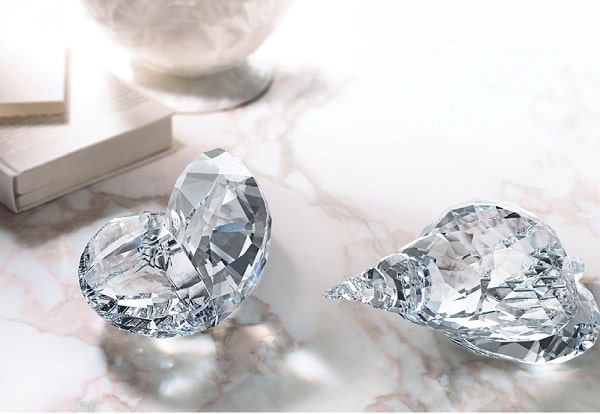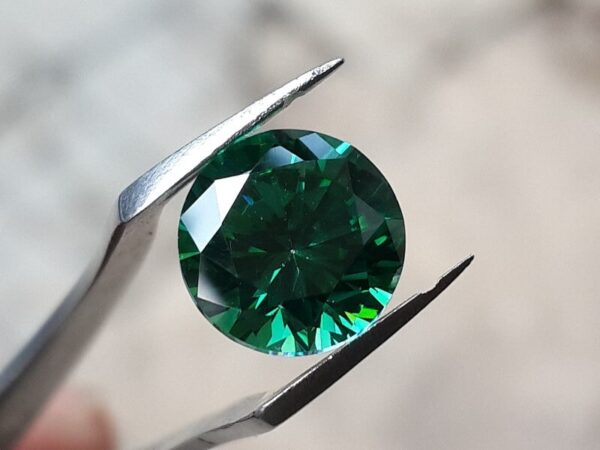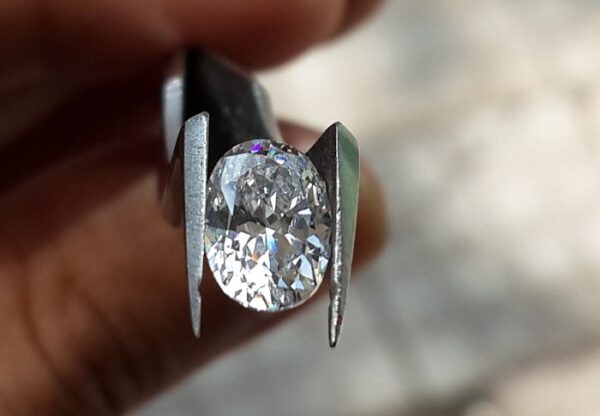Blog Replica Watches
Swarovski Stones: Origin, Uses, and Significance
Swarovski utilizes a range of unique technologies and techniques to create Swarovski stones with quality and brilliance similar to natural gemstones. These sparkling and sharp light reflections bring radiance and allure to designs and products, reflecting sophistication, luxury, and high quality, thereby enhancing the value and appeal of jewelry and decorative items.
1. What are Swarovski Stones? How are they formed?
Swarovski stones are artificial gemstones created by the Swarovski company, a globally renowned brand known for high-quality crystals, gemstones, synthetic diamonds, jewelry, and accessories. Swarovski stones are made from Zirconium Dioxide crystals, known for their high hardness, and are precisely crafted to produce light and sparkle akin to natural gemstones.
The technology to produce Swarovski stones was developed in 1892 by artisan Daniel Swarovski, the company’s founder. The production process involves using precise cutting machines to create perfect facets, angles, and curves. A metallic coating is then applied to the stone’s underside to enhance light reflection.

See more: 99+ Cartier jewelry customs at DWatch Global.
2. What are Swarovski Stones used for?
Swarovski stones are used in a variety of jewelry and decorative items, including:
- Jewelry: Commonly used in rings, necklaces, bracelets, earrings, and other types of jewelry, Swarovski stones’ light and sparkle create a dazzling and attention-grabbing effect.
- Fashion Decoration: Used to adorn fashion items like clothes, dresses, shoes, bags, and other accessories, these stones are often sewn or attached to products to add elegance and sparkle.
- Interior Decoration: Employed in home decor, such as chandeliers, table lamps, pictures, mirrors, and other decorative items, creating beautiful light effects and enhancing aesthetic appeal.
- Other Decorative Products: Swarovski stones can decorate mobile phones, tablets, car decorations, perfume bottles, wedding decor, and various other items, adding luxury and personalization.
3. Types of Swarovski Stones
Swarovski stones come in various shapes, sizes, and colors. Some main types include:
- Swarovski Crystal: The primary category made from high-quality glass and precisely crafted to produce light and sparkle similar to natural gemstones.
- Swarovski Zirconia: Artificial stones resembling natural diamonds, often used in jewelry for their high sparkle.
- Swarovski Pearls: Synthetic pearls made from glass fiber and coated with a glossy material to mimic natural pearls, widely used in jewelry.
- Swarovski Beads: Small beads made from Swarovski glass, used in diverse jewelry designs and crafts.
- Swarovski Flatbacks: Flat stones with a metallic coating on the underside, often attached to surfaces like clothes, shoes, bags, and mobile phones for added sparkle.

See more: 99+ Van Cleef & Arpels jewelry customs at DWatch Global.
4. Significance of Swarovski Colors
Each Swarovski stone color carries different meanings and evokes various feelings:
- Clear/Crystal: Represents purity, elegance, and infinity, symbolizing the purity of love, perfection, and completeness.
- Sapphire: Blue represents loyalty, wisdom, and balance, signifying steadfastness and strong trust in relationships.
- Ruby: Red symbolizes love, passion, and strong energy, representing sincere love, strength, and allure.
- Light Sapphire: Light blue signifies peace, freshness, and happiness, symbolizing freedom, balance, and a positive state of mind.
- Rose: Pink embodies femininity, love, and affection, representing sincere love, gentleness, and sensitivity.
- Jet: Black signifies mystery, strength, and depth, representing power, focus, and security.
- Topaz: Yellow symbolizes wealth, luck, and positive energy, creating a diplomatic and charming appearance.
- Amethyst: Purple often represents calmness, clarity, and righteous love, creating a sharp and elegant effect.
5. Significance in Feng Shui
In Feng Shui, Swarovski stones, though not natural, can still bring positive energy to spaces:
- Purity and Sparkle: Known for their brilliance, Swarovski stones attract positive energy and create clean, bright spaces, enhancing balance and harmony.
- Increased Radiance and Power: With their reflective and sparkling abilities, Swarovski stones enhance the visual appeal and draw attention in decorations and jewelry.
- Peace and Relaxation: Light and pastel colors like Light Sapphire or Rose can induce peace and relaxation, creating calm and balanced spaces.
- Enhancing Love and Affection: Colors like Ruby or Rose can be associated with love and romance, fostering positive energy in relationships.

6. Significance in Watchmaking
Swarovski stones add brilliance, aesthetics, and value to wristwatches:
- Aesthetic Appeal and Sparkle: Swarovski stones create beautiful light reflections, enhancing the visual appeal and making watches look luxurious and eye-catching.
- Added Value and Style: These stones provide uniqueness and personalization to watches, increasing their value and highlighting the wearer’s personal style.
- Symbol of Luxury and Class: Known for their luxury, Swarovski stones convey elegance and high-class, appealing to watch enthusiasts seeking quality and exclusivity.
- Inspiration and Creativity: The diverse colors and shapes of Swarovski stones inspire designers to create unique and standout watch designs.
7. Differences Between Diamond, Swarovski, Cubic Zirconia, and Moissanite
- Swarovski: Made from Zirconium Dioxide, crafted to produce light and sparkle similar to natural gemstones but without the same crystal structure or light reflection intensity as diamonds.
- Diamond: Natural gemstones formed from carbon, known for their unmatched hardness and high light reflection, making them extremely valuable in jewelry.
- Cubic Zirconia (CZ): Artificial stones made from Zirconium Dioxide, designed to mimic diamonds’ appearance and sparkle but are more brittle and prone to wear.
- Moissanite: Artificial stones made from Silicon Carbide, closely resembling diamonds in appearance and light effect but with a different crystal structure and higher light reflection index.
Each type of stone differs in crystal structure, light reflection intensity, and origin, with natural diamonds being the most valuable. Synthetic stones like Cubic Zirconia, Moissanite, and Swarovski replicate some characteristics of natural diamonds.

See more: 99+ Bvlgari jewelry customs at DWatch Global.
For high-quality jewelry, visit DWatch Global, where we proudly offer top-tier products that enhance your elegance and sophistication.

